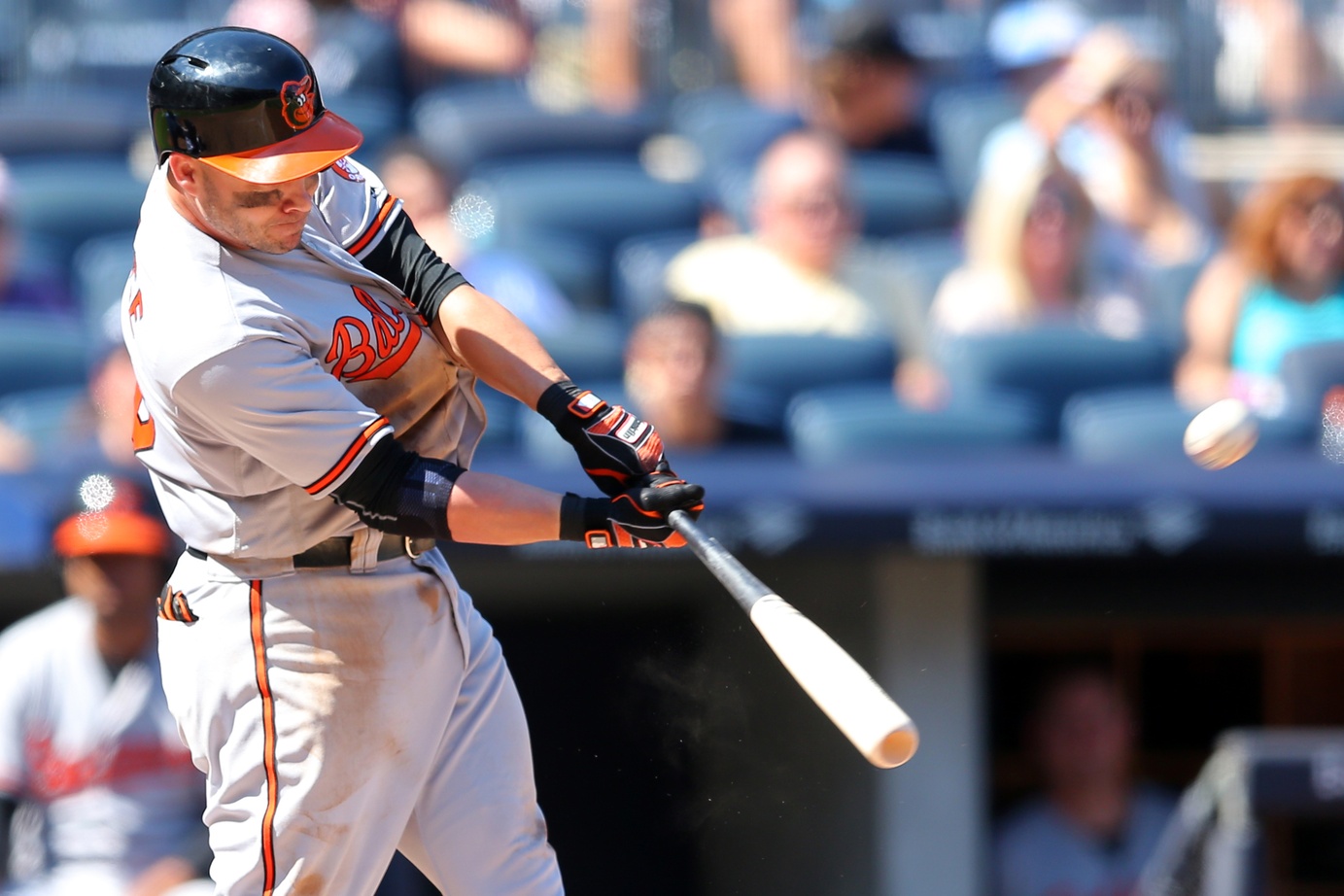Steve Pearce is one of the most unheralded signings of the offseason. It’s not hard to see why, given the contentious sentiment surrounding Toronto’s higher-profile negotiations, but Pearce was a nice get and he should help in multiple ways. A player who can play in either outfield corner, first base, and occasionally chip in at second or third is nothing to sneeze at. How the Blue Jays will deploy him in a crowded mix remains to be seen, though he does present a decent upgrade at at least one spot on the diamond.
The Jays, finally capitalizing on a cautious free agent market, brought back franchise icon Jose Bautista. That’s a nice move with fairly little risk involved and solves one problem spot in the outfield. Both John Gibbons and Ross Atkins have hinted at Bautista potentially playing some first base this season, though Gibbons also referred to it as, “not something we’re really looking at.”
Still, the smart money points to Bautista playing some infield and sharing the DH role with Kendrys Morales in addition to his outfield adventures. With Melvin Upton, Ezequiel Carrera, Steve Pearce, Dalton Pompey and any potential (i.e. hopeful) leftover lefties from the free agent market scrounging for playing time, it makes sense to open up right field from time to time.
How the team divvies up the playing time at the corners is worth looking into. None of the in-house options can be trusted against right handed pitching, and that will be compounded with Kevin Pillar’s similar struggles. It would seem that Upton, a sound defender and a decent hitter against lefties in his own right, will get all of the starts against southpaws. It’s an odd spot, as all of the candidates perform better against left handed pitching with the exception of Pompey and his incredibly small sample size. The team has created several redundancies without acquiring a complementary fix: there are four right shoes and no left ones.
You’d think that one is still available (Brandon Moss, namely), but it remains to be seen if outside help is on the way given budget constraints and the team’s weird affinity for Carrera. Pearce could see some starts in left or right, but given the lack of a pure platoon opportunity it doesn’t look like that will be his main role.
Later on in the clip above, Gibbons was non-committal when asked whether newcomer Pearce would be his primary first baseman. Edwin Encarnacion and his 74 starts at first are gone, and it’s been thought that Pearce would form a platoon with Justin Smoak, with the holdover switch hitter getting most of the at-bats against righties as well as his usual late-inning defensive replacement work. Morales and now Bautista might get some spot duty there as well, but Pearce and Smoak are the main characters for now.
Pearce obviously will get at bats against left handed pitchers, presumably coming at the expense of Smoak given the abilities of Toronto’s outfielders. Surely you have to give Smoak some at bats (hint: you don’t- you don’t even have to keep him on the roster, if push comes to shove), so he’ll take the other half of the platoon.
That would be fine and dandy if Smoak performed better against righties than Pearce. Smoak’s career righty splits (.224/.316/.403), compared with Pearce’s (.245/.322/.406) seem to suggest that he shouldn’t be getting regular work in that situation either. One would hope that common sense prevails, but we’ve been subjected to separate leadoff stints for Ben Revere and Kevin Pillar, so it’s no slam dunk.
On the defensive side of the ledger, there’s no real reason to prefer Smoak either. While defensive metrics can be fickle, Pearce has a career +12 DRS and +8.9 UZR in 1,585 innings at first base. In 6,007 innings at first, Smoak has produced -16 DRS and +0.6 UZR. To be fair, 2013 exists as a massive outlier with -8 DRS and a -4.2 UZR, but even discrediting the anomaly, defense hardly seems to be a feather in Smoak’s cap.
The only real (and very real) reservation that the team should have in regards to Pearce is his durability. He underwent season-ending elbow surgery in September and was given a recovery timetable of 4-6 months, meaning he may miss a chunk of spring training. On top of that, Pearce has never appeared in more than 102 games, which he did in 2014 with Baltimore. Asking a player who has sustained elbow, hamstring and oblique injuries since 2015 alone to take on a full workload may be a bit of a stretch. The team could work to get him some time at DH, though Morales, Bautista and any half-days for Josh Donaldson should be the priority there.
Still, Pearce is, at present, the Jays’ best option at first and a passable option in left against right handed pitching. The injury concerns will probably keep the Jays from giving him regular at bats out of left field, instead Voltroning some kind of ineptitude out of Carrera and Upton.
Pearce is a player with some degree of versatility and a bankable skillset: he mashes left handed pitching. It’s a handy profile that makes him a fit on just about any roster, and it’s now up to the Jays to make the most of his presence. Making him the primary first baseman is a start, and a sprinkling of time in the outfield wouldn’t hurt. The Jays did well to acquire an eminently useful guy like Pearce. Finding him adequate playing time while keeping him healthy will be the challenge.

If the Jays can figure out how to keep Pearce healthy, my guess is that it won’t be hard to find playing time for him. It will take care of itself, likely as the main 1B plus elsewhere to give other players some rest days.